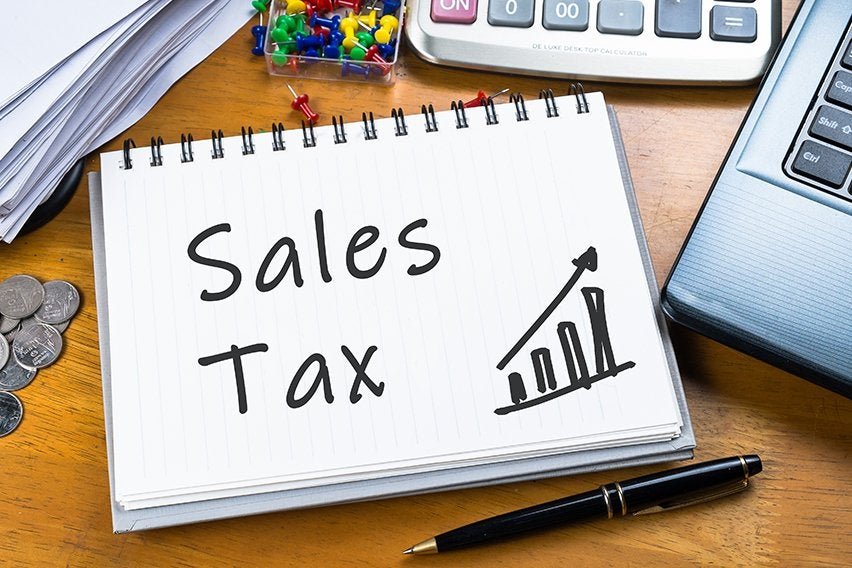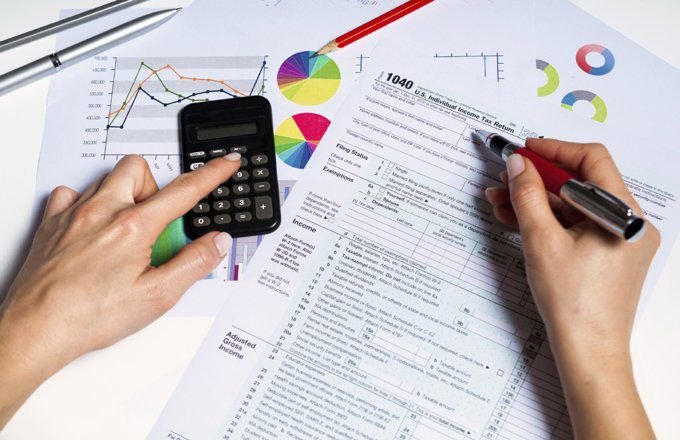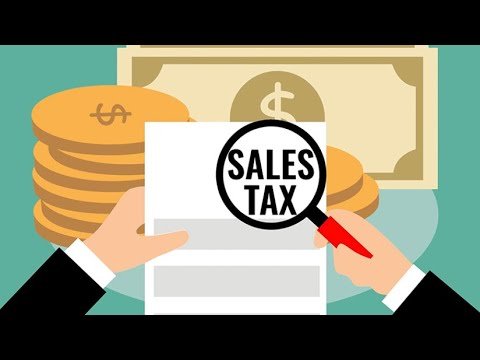CPA Comfort Letter vs. Income Verification Letter: Understanding the Difference
When it comes to financial documentation, two terms often come up: CPA Comfort Letter and CPA income verification letter. These documents are essential in various scenarios, especially when it comes to proving financial stability or authenticity. But what exactly are they, and how do they differ? In this article, we’ll break down the CPA Comfort Letter and Income Verification Letter, helping you understand their unique purposes, benefits, and when each is needed. Key Features of a CPA Comfort Letter: Assures financial statements or records. Ensures the data complies with accounting standards. It’s used for business transactions, investments, or legal proceedings. Offers a non-binding opinion based on current financial information. A CPA typically issues it in scenarios involving legal documents, mergers, or capital raising. What is an Income Verification Letter? An Income Verification Letter, on the other hand, is a more straightforward document that confirms an individual’s income and employment status. It’s commonly used when someone is applying for a loan, mortgage, or rental agreement. For instance, self-employed individuals who don’t have regular pay stubs may need an Income Verification Letter to show their earnings and financial stability to potential lenders or landlords. The primary purpose of this letter is to provide evidence of income sources and to verify the accuracy of financial claims made by an individual. This letter is often requested by banks, landlords, or other institutions to assess a person’s ability to meet financial obligations. Key Features of an Income Verification Letter: Verifies an individual’s income and employment status. Often used for loan or mortgage applications. Helps landlords assess a potential tenant’s ability to pay rent. Commonly requested by banks or lenders for financial transparency. CPA Comfort Letter vs. Income Verification Letter: The Main Differences While both letters serve as official documents that validate financial information, there are some key differences between a CPA Comfort Letter and an Income Verification Letter. Here’s a quick comparison: Feature CPA Comfort Letter Income Verification Letter Purpose Provides comfort or assurance about the accuracy of financial statements or records. Confirms an individual’s income and employment status. Who Issues It Issued by a Certified Public Accountant (CPA). Can be issued by an employer or self-employed individual. Common Uses Used in business transactions, investments, and legal matters. Used for loan or mortgage applications and rentals. What it Verifies Verifies compliance with accounting standards and the accuracy of financial records. Verifies income and employment status of the individual. Binding Nature Provides a non-binding opinion. Provides direct proof of income and employment. When is a CPA Comfort Letter Needed? A CPA Comfort Letter is typically required in more formal or business-related situations where financial credibility is important. Some common scenarios where this letter might be needed include: Business Transactions: When a company is involved in a merger, acquisition, or partnership, a CPA Comfort Letter can assure parties that the financial statements and information are accurate. Capital Raising: If a company is raising capital through investors or lenders, a CPA Comfort Letter can help provide confidence that the financial data presented is accurate. Legal Proceedings: In legal matters where financial documentation is required, a CPA Comfort Letter may be needed to authenticate financial records and assure all parties of their reliability. Investor Assurance: Investors may request a CPA Comfort Letter to verify the financial health and stability of a business before making any investments. When is an Income Verification Letter Needed? An Income Verification Letter is commonly needed in more personal situations where proof of income is required. Some situations where this letter may be requested include: Mortgage or Loan Applications: Lenders need to verify a borrower’s income to ensure they can repay the loan. Self-employed individuals, in particular, may use this letter to confirm their income. Rental Agreements: Landlords may request this letter from potential tenants to assess their ability to pay rent. It’s especially important for self-employed individuals who don’t have regular pay stubs. Tax Filings: If you’re filing taxes as a self-employed individual or need proof of income for tax purposes, an Income Verification Letter might be required. Financial Aid: For students or families applying for financial aid or assistance, an Income Verification Letter may be necessary to verify household income. Which One Should You Choose? The choice between a CPA Comfort Letter and an Income Verification Letter largely depends on your situation. If you’re a business or involved in financial transactions, a CPA Comfort Letter may be needed to assure others of the accuracy and integrity of your financial statements. On the other hand, if you are an individual applying for a loan, mortgage, or rental, an Income Verification Letter will be more appropriate. Here’s a quick guide on which letter to use: For Business and Corporate Needs: Use a CPA Comfort Letter. For Personal Income Verification (Loans, Rent, etc.): Use an Income Verification Letter. Conclusion Both the CPA Comfort Letter and the Income Verification Letter serve important roles in validating financial information, but they are used for different purposes and in different contexts. A CPA Comfort Letter is generally needed for business-related transactions, offering a professional opinion on financial data. In contrast, an Income Verification Letter is more personal and is typically requested by lenders, landlords, or tax authorities to confirm an individual’s income and employment status. Understanding the difference between these two documents can help you choose the right one for your specific needs and ensure your financial matters are presented accurately. Whether you are self-employed, a business owner, or an individual looking to secure a loan or rental agreement, having the right documentation is crucial for achieving your goals.
10 Best Financial Planning tips for Freelancers and self employed individuals

Embarking on a freelancing or self-employment journey is an exhilarating adventure, but it comes with unique financial challenges. To ensure a prosperous and secure future, mastering the art of financial planning is crucial. In this blog, we’ll explore 10 Best Financial Planning tips for Freelancers and self employed individuals, presented in a visually appealing format with tables and a vibrant color scheme. 1. Create a Comprehensive Budget Expense Category Amount ($) Housing Utilities Healthcare Business Expenses Savings Entertainment Miscellaneous Total Begin with a detailed monthly budget, allocating funds to essential categories. This will provide a clear overview of your financial landscape, helping you make informed decisions. 2. Build an Emergency Fund Table: Emergency Fund Tracker Month Emergency Fund ($) Jan 2024 Feb 2024 Mar 2024 Apr 2024 May 2024 Life is unpredictable. Establishing an emergency fund ensures you’re prepared for unexpected expenses, offering peace of mind during challenging times. 3. Set Clear Financial Goals Define short-term and long-term financial goals, outlining specific amounts and deadlines. This will guide your savings and investment strategies. 4. Understand Tax Obligations Task Deadline Gather Receipts and Invoices Estimate Quarterly Taxes Maximize Deductions Consult Tax Professional Navigating tax responsibilities is critical. Keep track of deadlines and consult a tax professional to optimize deductions and minimize liabilities. 5. Invest Wisely Investing wisely isn’t about chasing quick bucks or winning the stock market game. It’s about planting seeds today for a fruitful future. It’s about understanding your goals, balancing risk, and choosing diversified paths to growth. It’s about patience, knowledge, and keeping your emotions in check. It’s about building a secure tomorrow, brick by financial brick. Invest wisely – it’s not just about money, it’s about building a stronger, future-proof you. 6. Invoice and Payment Tracking Maintain a systematic record of your invoices and payments to ensure timely and accurate income tracking. 7. Plan for Retirement Self-employed individuals must prioritize retirement savings. Create a plan and consistently contribute to secure a comfortable retirement. 8. Insurance Coverage What is Insurance Coverage? Insurance coverage is a contract between you (the policyholder) and an insurance company (the insurer). You pay a premium (regular payments) to the insurer, and in return, they agree to financially compensate you if certain events happen, like: Why is Insurance Coverage Important? Life is full of uncertainties. Even the most careful planner can’t predict everything. Insurance coverage provides peace of mind knowing that you’re financially protected if something unexpected happens. It can help you: 9. Continuous Learning and Skill Development Invest in yourself by setting aside funds for ongoing education and skill development. Stay relevant in your industry to enhance earning potential. 10. Regularly Review and Adjust Date Net Worth ($) Financial Goals Progress (%) Jan 2024 Jul 2024 Jan 2025 Consistently review your financial plan, making adjustments as needed. Track your progress and celebrate achievements along the way. 10 Best Financial Planning tips for Freelancers and self employed individuals Conclusion Achieving financial success as a freelancer or self-employed individual requires careful planning and execution. By following these 10 Best Financial Planning tips for Freelancers and self employed individuals you’ll be well on your way to building a stable and thriving financial future. Remember, financial freedom is a journey, not a destination. 10 Best Financial Planning tips for Freelancers and self employed individuals Let’s conquer the chaos of tax season together! Contact Now Read Next Article : 10 Tips for hiring a tax professional
Steps and data required for sales tax registration

Embarking on the entrepreneurial journey comes with its fair share of responsibilities, and one crucial aspect that often puzzles business owners is sales tax registration. The world of tax regulations can be overwhelming, but fear not! In this blog, we’ll explain Steps and data required for sales tax registration, ensuring you’re equipped with the knowledge to navigate this terrain effortlessly. Step 1: Know Your Business Before diving into the paperwork, take a moment to understand your business operations. Ask yourself: Do I sell products or services? Where are my customers located? Different jurisdictions have varying sales tax requirements, so having a clear picture of your business model will set the stage for a smooth registration process. Step 2: Identify Nexus Nexus is a fancy term that essentially means a significant presence in a particular location. Determine where your business has nexus, as this will influence where you need to register for sales tax. Nexus can be established through physical locations, employees, or a substantial amount of sales in a specific region. Step 3: Gather Necessary Information To streamline the registration process, gather essential information about your business. This may include your Employer Identification Number (EIN), business structure details, and basic contact information. Additionally, be prepared to provide details about your products or services, as certain items may be exempt from sales tax. Step 4: Choose Your Registration Method Most tax authorities offer online registration options, making the process more convenient. Research the registration methods available in your jurisdiction, whether it’s through a dedicated online portal or by submitting paper forms. Opting for the online route often ensures a faster and more efficient registration experience. Steps and data required for sales tax registration. Step 5: Complete the Registration Form The registration form is the heart of the process, requiring accurate and detailed information about your business. Be prepared to answer questions about your business activities, location, and the anticipated volume of sales. Double-check all entries to avoid unnecessary delays or complications. Steps and data required for sales tax registration. Step 6: Submit the Application Once you’ve filled out the registration form, it’s time to submit your application. If you’re using an online portal, follow the prompts to upload any necessary documentation and finalize the process. For paper submissions, ensure that you send the application to the correct address and include all required attachments. Steps and data required for sales tax registration. Step 7: Stay Informed After submitting your application, stay informed about the status of your registration. Many tax authorities provide online portals where you can check the progress of your application. Be patient, as processing times may vary. Steps and data required for sales tax registration. Step 8:Ongoing Compliance: once registered, businesses must stay compliant with ongoing filing and reporting requirements. This includes filing regular sales tax returns, remitting collected taxes, and keeping abreast of any changes to tax rates or regulations. Steps and data required for sales tax registration Conclusion: Steps and data required for sales tax registration process doesn’t have to be a daunting task. By understanding your business, identifying nexus, gathering necessary information, choosing the right registration method, completing the form accurately, and staying informed about the process, you’ll be well-equipped to meet your sales tax obligations seamlessly. Remember, you’re not alone on this journey – countless entrepreneurs have successfully registered for sales tax, and with the right knowledge, so can you! In conquering the sales tax registration maze, knowledge is your compass. Armed with these straightforward steps, you’re poised for a hassle-free journey toward compliance. Stay proactive, stay informed, and empower your business to thrive within the bounds of tax regulations. Cheers to your entrepreneurial success! Read Previous Article : 8 best tax free states for startups
Most claimed deductions on 1040 Return

Most claimed deductions on 1040 Return : When it comes to filing your taxes, understanding and utilizing deductions can be a powerful tool in reducing your taxable income and maximizing your refund. But with a plethora of options available, navigating the world of deductions can feel like a daunting task. Worry not, tax-savvy citizens! This comprehensive guide dives deep into the Most claimed deductions on 1040 Return, empowering you to optimize your tax strategy. Most claimed deductions on 1040 Return Unlocking the Power of Mortgage Interest Homeownership comes with many benefits, and a significant tax advantage is one of them. If you’re fortunate enough to own a home with a mortgage, you can deduct the interest paid on your loan from your taxable income. This deduction can translate into substantial savings, especially for those with high mortgage balances. Shouldering the Load: State and Local Taxes The burden of state and local taxes can be significant, but the good news is, you might be able to lighten it come tax season. By itemizing your deductions, you can claim the amount you paid in state and local income taxes, property taxes, and even sales taxes. This can be a particularly valuable deduction for residents of states with high tax rates. Healing Your Wallet: Medical Expenses The sting of unexpected medical bills can be softened by the power of deductions. If your medical and dental expenses exceed 7.5% of your adjusted gross income (AGI), you can deduct them on your tax return. Remember, this includes not just doctor visits and prescriptions, but also qualified medical equipment, mileage to medical appointments, and even long-term care expenses. Giving Back, Getting Back: Charitable Donations Contributing to your favorite charitable causes is both rewarding and tax-advantageous. When you itemize your deductions, you can deduct the value of your donations to qualified charitable organizations, encouraging philanthropy while reducing your tax burden. Be sure to keep detailed records of your contributions, including the date, amount, and recipient organization. Investing in Your Future: Education Expenses Whether you’re pursuing your dream career or helping your child with college tuition, education can be a significant expense. Fortunately, the tax code offers several deductions and credits to support your educational endeavors. The American Opportunity Tax Credit and Lifetime Learning Credit can provide valuable tax relief for qualified education expenses. Additionally, student loan interest paid on qualified loans is also deductible. Beyond the Basics: Uncovering Hidden Gems In addition to the Most claimed deductions on 1040 Return mentioned above, there are numerous other opportunities that can significantly contribute to maximizing your tax savings. Beyond the usual suspects, it’s essential to explore potential deductions related to specific circumstances, such as home office expenses, job-related travel, or contributions made to retirement accounts like IRAs and HSAs. Consulting with a knowledgeable tax professional is crucial in this regard, as they can provide valuable insights and guidance tailored to your unique financial situation. By delving into these less obvious avenues, you may uncover additional deductions that could prove instrumental in optimizing your overall tax strategy and minimizing your tax liability. The Power of Knowledge: Arm Yourself for Tax Success Understanding the Most claimed deductions on 1040 Return is just the first step in navigating the complex world of taxes. By staying informed about the latest tax laws and regulations, consulting with a qualified tax professional, and utilizing tools like the PostGenius App, you can confidently claim all the deductions you deserve and maximize your tax refund. Remember, knowledge is power, and when it comes to taxes, being empowered translates to real savings! So, don’t let your lack of tax expertise cost you hard-earned money. Take control of your tax situation, embrace the power of deductions, and watch your tax burden shrink as your savings grow! Let’s conquer the chaos of tax season together! Read previous Article : How Sales Tax works for Ecommerce Businesses
Secure Your Loan Approval with a Certified CPA Comfort Letter

Secure Your Loan Approval with a Certified CPA Comfort Letter
Complete Guide to US Sales Tax for Businesses, Insights from a CPA

All about US Sales Tax from CPA
How sales tax works in Shopify

Navigating the complexities of sales tax can be a daunting task for online sellers, especially when venturing into the realm of Shopify. With varying tax rates and regulations across different US states, ensuring compliance can seem like an insurmountable challenge. However, understanding the nuances of How sales tax works in Shopify is crucial for maintaining a tax-compliant business and avoiding potential penalties. How sales tax works in Shopify Understanding Nexus and Economic Nexus Before delving into the intricacies of sales tax calculation, it’s essential to grasp the concept of nexus. Nexus refers to a connection or presence in a state that obliges a seller to collect and remit sales tax in that state. Traditionally, nexus was established through a physical presence, such as having a store or warehouse in the state. However, the 2018 Supreme Court ruling in South Dakota v. Wayfair, Inc. expanded the definition of nexus to include economic nexus, meaning a seller can have nexus in a state even without a physical presence there. Economic nexus is typically established by exceeding certain sales thresholds or transactions within a state. How sales tax works in Shopify Determining Your Sales Tax Obligations To determine your sales tax obligations on Shopify, you need to assess whether you have nexus in any states where you ship products. If you have nexus in a state, you are responsible for registering for a sales tax permit and collecting and remitting sales tax from customers in that state. Shopify Tax, a built-in feature on Shopify, can help you automate this process by calculating and collecting sales tax based on your shipping destinations. How sales tax works in Shopify Sales Tax Calculation and Rates Sales tax rates vary across US states, ranging from 2.9% to 11.5%. In some states, local sales taxes may be added on top of the state sales tax, resulting in a combined sales tax rate. When calculating sales tax on Shopify, the platform automatically applies the applicable sales tax rates based on the customer’s shipping address. Taxable Products and Services Not all products and services are subject to sales tax. In general, tangible personal property, such as clothing, electronics, and furniture, are taxable. However, certain items, such as groceries, prescription drugs, and some services, may be exempt from sales tax. Shopify allows you to categorize your products to ensure accurate sales tax calculation. Filing and Remitting Sales Tax Once you have collected sales tax from your customers, you are responsible for filing and remitting the collected tax to the appropriate state tax authorities. Shopify Tax can help you generate sales tax reports and file your sales tax returns electronically. Compliance and Penalties Failing to collect and remit sales tax correctly can result in significant penalties and fines. It’s crucial to stay informed about sales tax regulations and ensure you are compliant with the requirements of all states where you have nexus. Additional Considerations Conclusion Understanding and managing How sales tax works in Shopify can seem overwhelming, but with the “Experienced Sales Tax Consultant”, it can be a manageable process. Shopify Tax streamlines the sales tax process, but it’s always advisable to seek guidance from a tax professional to ensure you are compliant with all applicable laws and regulations. Let’s conquer the chaos of tax season together! Read Previous Article : Complete Guide to US Sales Tax for Businesses, Insights from a CPA